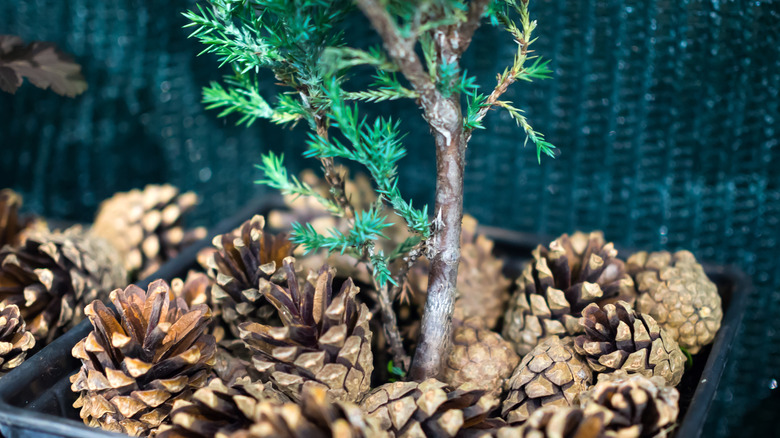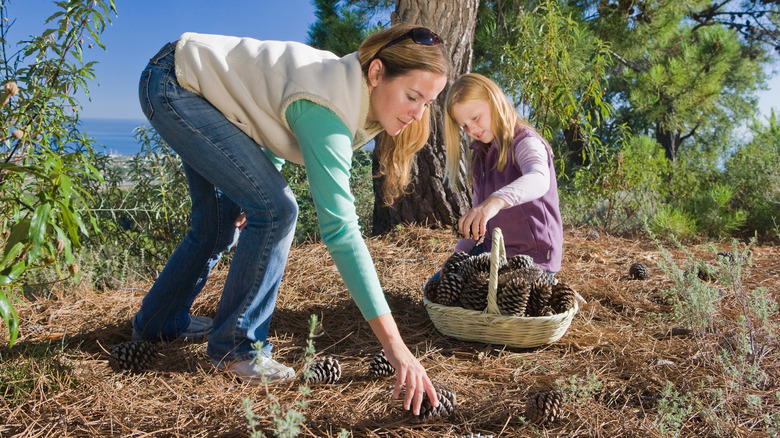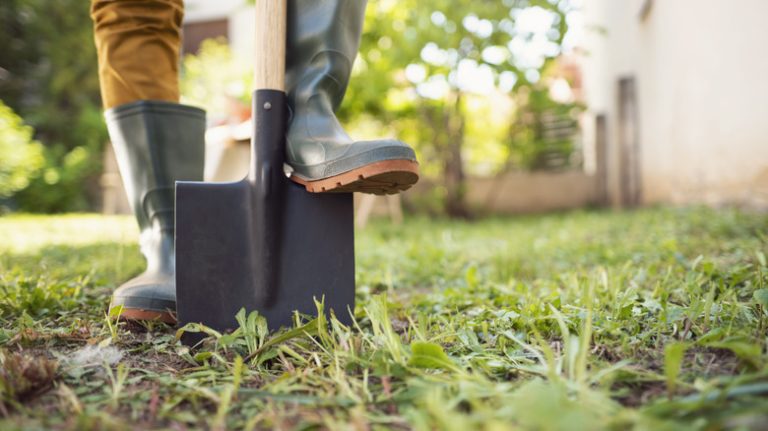Many gardeners use mulch to aid with water and heat retention, reduce soil compaction, and inhibit weed growth in their gardens and plant beds. Commercial mulch, however, can be a bit pricey — especially when you consider the labor and cost of replacing it every year or two. If you have some pine trees on your property, you may have wondered at some point whether or not pinecones can be used as mulch. The answer is yes.
Pinecones are not only suitable to be used as mulch, but they also provide a few benefits that go beyond what typical wood chip mulch has to offer. The most attractive reason to use your own pinecones for mulch, though, is that they’re free. If you’ve been wondering whether or how to use the pinecones you already have lying around as mulch for your garden or landscaping, you can consider this your guide to pinecone mulch.
Benefits of using pinecones as mulch

Using pinecones as mulch offers all the same benefits of using traditional wood mulch, including moisture and heat retention, weed suppression, and soil compaction reduction. However, they also contain some natural properties that commercial mulch blends don’t. First, pinecones have natural anti-fungal and anti-bacterial properties that can help prevent decay or mold growth and repel pests. Pinecones are also fire-resistant, unlike traditional mulch.
If you’re looking for a more natural, organic, or rustic appearance in your garden or landscape — as opposed to a traditionally manicured aesthetic — pinecone mulch may be the answer. Rather than uniform chips, pinecones come in all shapes and sizes. Pinecone mulch can also be customized. If you tend to water your plants often or live in an area that receives a lot of rain, mulching with whole pinecones can allow more air flow to prevent the soil from becoming oversaturated. If you tend to apply less water, you can grind your pinecone mulch for more moisture retention instead.
How to use pinecones as mulch

Using pinecones as mulch isn’t much more complicated than using commercially prepared mulch. The main difference is that you’ll need to gather the pinecones yourself, since major suppliers like Home Depot and Lowe’s carry pine bark mulch, but not pinecone mulch. If you own many pine trees, this should be easy. Collect only the healthiest-looking cones, being sure to leave any that show signs of potential mold or decay. Once you’ve gathered enough to cover your bed or garden, decide whether you want to leave them whole for more airflow or grind them for more moisture retention.
If you decide that you’d like to grind your pinecone mulch, the easiest way to do so is with a wood chipper. You can rent a chipper from Home Depot for under $100 for four hours, though exact pricing is determined at the store. If this isn’t feasible for you, it’s also possible to break up your pinecones by placing them in a wheelbarrow or bucket and crushing them using a shovel. Place your pinecone mulch 2 to 3 inches thick, just as you would with commercial mulch, and prepare to replace it at the same frequency as well.



